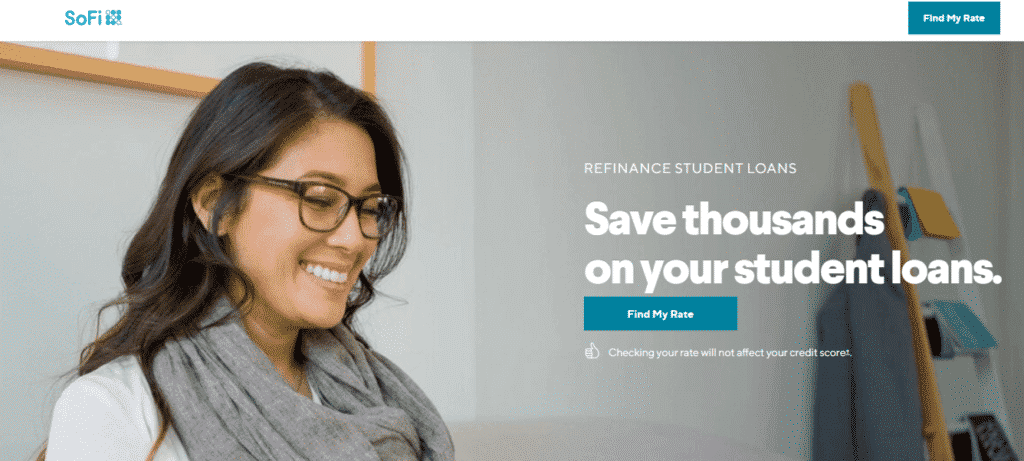Want to Make Extra Money Now?
|
Everyone knows that they should properly manage student loans and be paying student loan debt as fast as possible. If it were only that easy.
Some of the most common questions I get about student loans are, “do I qualify for a discounted payment plan or student loan forgiveness?” And, “Am I on the right payment plan?”
This post will provide you with ways to help with managing student loan debt so you won’t be another broke college student.

If you want to pay less interest
Best repayment option: standard repayment.
If you took out any Federal Direct Loans, FFEL Loans, Perkins Loans, or almost any other private loan out there, you were probably automatically enrolled in a standard payment plan as soon as your student loan grace period ended.
These loans are paid back equally in monthly payments for 10 years and will typically be the option that offers you to eliminate student loan debt the fastest but have the highest payment. If you can afford the standard plan, you’ll pay less in interest payments and pay off your loans faster than you would with other federal repayment plans.
If you aren’t sure if you can afford the standard repayment plan, be sure to organize your student loan information to see what your monthly payment would be. If you don’t have enough to make the payments, you can try looking into using side hustles or simply go with an income-driven payment plan.
If you need lower student loan payments
Best repayment option: income-driven repayment.
Income-driven plans set your monthly student loan payment at an amount that is intended to be affordable based on your income and family size, were designed for those facing financial hardship upon graduation (which pretty much describes nearly all graduates these days).
Instead of simply calculating the payment period over three years, the government will calculate your payment based on a percentage of your income.
With an income-driven plan, it could take a while longer to pay down your debt (if you only pay the minimum monthly payment), but it can significantly lower your monthly payment if you have a high balance. Plus, on some payment plans, when the interest owed exceeds the monthly payment, the government with cover the shortfall for three years or more.
There are four income-driven repayment plans:
- Revised Pay As You Earn Repayment Plan (REPAYE Plan): Generally 10 percent of your discretionary income.
- Pay As You Earn Repayment Plan (PAYE Plan): Generally 10 percent of your discretionary income, but never more than the 10-year Standard Repayment Plan amount.
- Income-Based Repayment Plan (IBR Plan): Generally 10 percent of your discretionary income if you’re a new borrower on or after July 1, 2014, but never more than the 10-year Standard Repayment Plan amount.
- Income-Contingent Repayment Plan (ICR Plan): The lesser of the following: 20 percent of your discretionary income or what you would pay on a repayment plan with a fixed payment over the course of 12 years, adjusted according to your income.
If you’d like to repay your federal student loans under an income-driven plan, you need to fill out an application. You can contact your servicer to apply for income-driven repayment plans, student loan forgiveness, and more.
Why everyone should consider income-driven plans
You might be thinking, “I can afford to pay the standard payment. Why should I consider an income-driven plan?”
Good question! Everybody knows that you should pay down the loan with the highest interest rate first.
What you may not know is that using an income-driven repayment plan can still have benefits even if you can afford the standard payment plan, since an income-driven plan lowers your monthly payment across all of your loans.
“Won’t I pay the same amount of interest either way?” you might be asking yourself. Not necessarily. Because your required payment is lowered, you now have more cash free to pay down your higher interest loan.

This is especially meaningful if you have large differences in your interest rates. Let’s look at an example of someone with $35,000 of student loans spread equally at 5.7%, your income is $20,000 and grows 3.5% annually, and you are single.
| Original | PAYE | Savings | |
|---|---|---|---|
| First month | $383 | $16 | $367 |
| Last month | $383 | $86 | $297 |
| Balance paid | $45,960 | $11,086 | $34,875 |
| Total forgiveness | $0 | $63,884 | $63,884 |
| Repayment term | ~ 10 years | ~ 20 years | ~10 years |
Often, your monthly payments under PAYE aren’t enough to cover interest accruing on loans. Under both IBR and PAYE, interest is not capitalized — or added to the principal balance — until you leave the repayment program or fail to recertify your income by the annual deadline.
However, under PAYE, unpaid interest is only capitalized until the principal increases by 10%. This cap is a substantial benefit because when interest is capitalized, you pay interest on the interest.
Under both IBR and PAYE, low payments also mean you often won’t repay your loan even after decades. You’ll have the remaining balance forgiven under both, as long as you made all your payments. PAYE provides for loan forgiveness after 20 years, while IBR payments on loans taken before July 1, 2014, must be made for 25 years before loans are forgiven. However, under both PAYE and IBR, you will have to pay taxes on the amount forgiven.
The Three Types of Income-driven Student Loan Repayment Plans
| Plan | Pay as You Earn (PAYE) | Income-Based-Repayment (IBR) | (Revised Pay as You Earn (REPAYE) |
|---|---|---|---|
| What is it? | Limits payments to the lower of 10% of borrower’s income or the standard payment plan. | Limits payments to the lower of 15% of borrower’s income or the standard payment plan. | Limits payments to 15% of borrower’s (family if married filing joint) income. |
| Interest Adjustment | Government pays first three years of interest on subsidized loans in excess of monthly payment | Government pays first three years of interest on subsidized loans in excess of monthly payment | Government Covers First Three Years of Interest on subsidized loans not covered by payment and 50% of interest not covered thereafter. |
| Taxable Forgiveness | Taxable Loan Forgiveness After 20 Years | Taxable Loan Forgiveness After 25 Years | Taxable Loan Forgiveness After 25 Years |
| PSLF Forgiveness | Qualifies after 10 Years | Qualifies after 10 Years | Qualifies after 10 Years |
| Qualifying Loans | |||
| Federal Direct Loans | ☑ | ☑ | ☑ |
| FFEL Loans* | X | X | X |
| Perkins Loans* | X | X | X |
| Parent Plus Loans* | X | X | X |
| Private Loans | X | X | X |
Refinance Your Student Loan With SoFi
If you are thinking about how to better manage student loans, you should know about SoFi. SoFi is a social lending company that provides rates as low as 1.9% variable with auto pay and 3.5% fixed with auto pay.

You can save thousands simply by refinancing your student loan interest rates. They can offer lower rates than the rest because they analyze you based on merit, quality of employment, and education besides just a credit score and financials. There are zero origination and prepayment fees. Offer terms are from 5, 10, 15, 20 years in both fixed and variable. Both private and public student loans can be refinanced.
Besides low rates, one of their best features is their unemployment benefits. If you lose your job while repaying your loans, you don’t have to pay your loan for up to 12 months while you look for a new job! Interest will still accrue, but having this cash flow break is a huge benefit. They also provide job assistance guidance as well. You can refinance or apply for a new student loan here.
Beat Student Loan readers receive a special $100 welcome bonus if you go through our exclusive link.
Disclosure: We earn a commission for this endorsement of Fundrise.
